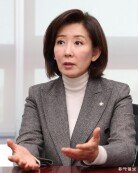The challenge of meeting Trump on America’s soil
The challenge of meeting Trump on America’s soil
Posted March. 05, 2025 07:46,
Updated March. 05, 2025 07:46
The war U.S. President Donald Trump ignited has no gunfire, but it is ushering in a new normal where each player must survive on its own. In his meeting with Ukrainian President Volodymyr Zelensky last month, broadcast worldwide, Trump made one thing brutally clear: he sees himself not as a guardian of global peace but as a hard-nosed negotiator fighting for American taxpayers.
South Korea, like many others, is running out of time. In late February, Trump declared he was considering tariffs on semiconductors and pharmaceuticals, warning they could reach 25% or higher. The U.S. hasn’t imposed tariffs on semiconductors since the 1997 Information Technology Agreement under the World Trade Organization. Now, for the first time in 28 years, Washington is reaching for the tariff sword again, aimed directly at Seoul’s economic heart.
To grasp the scale of this threat, it's worth revisiting the 1980s. Japanese semiconductor companies, which had sustained steady growth in a U.S.-dominated market, began to outpace American firms. By 1985, the U.S. felt cornered, and President Ronald Reagan, responding to industry pressure, launched a sweeping anti-dumping investigation. The resulting 1986 U.S.-Japan Semiconductor Agreement forced humiliating concessions from Tokyo, gradually crippling Japan's semiconductor dominance. The fallout opened the door for South Korea, which became a semiconductor powerhouse on the back of U.S. support.
Fast forward to 2025, and Trump is wielding the same playbook. But this time, South Korea is far more vulnerable due to its reliance on semiconductors. The country’s dependence on U.S. markets has deepened: the share of Korea’s semiconductor exports heading to the U.S. — directly or via Taiwan’s TSMC — rose from 13.9% in 2020 to 21.7% last year, while exports to China fell from 40.2% to 33.3%.
China, once a major export lifeline, is increasingly out of reach. Trump has not only blocked high-tech U.S. exports to China but vowed to scrutinize investments in companies tied to Beijing. Meanwhile, China’s push for semiconductor self-sufficiency is accelerating at a conspicuous pace.
There is one critical difference between 1986 and now. The U.S. semiconductor industry then pleaded with Washington to curb Japan's rise. Today, American chipmakers are warning that harsh measures against South Korea could backfire at their own cost. Their reasoning is simple: Korean chipmakers are intertwined with the global supply chains, and companies like Nvidia and Apple are critically dependent on Korean-made HBM and DRAM — components that, at least for now, are irreplaceable.
However, Trump’s “every nation for itself” new normal is spreading from Europe to the Asia-Pacific. Germany’s right-wing forces are resurging, with a far-right party rising to become the nation’s second largest, and Zelensky’s public humiliation has rattled even the European heartland. South Korea, flanked by Pyongyang to the north and Beijing beyond, has long relied on its U.S. alliance and technological edge — a reliance that may soon be tested as Trump’s new order reaches the Asia-Pacific.
A lawyer advising companies on Trump-era strategies put it bluntly: “Like TikTok’s case, you need to become indispensable for Trump and non-negotiable on his terms.” The domestic regulations that Korean firms lament as exceptionally hostile can no longer afford to be swayed by shifting political sentiment. It’s time to sharpen the nation’s competitive weapons: semiconductors, automobiles, shipbuilding, and more. History may repeat itself, but for small, export-driven nations, the strategies for survival have remained the same.







